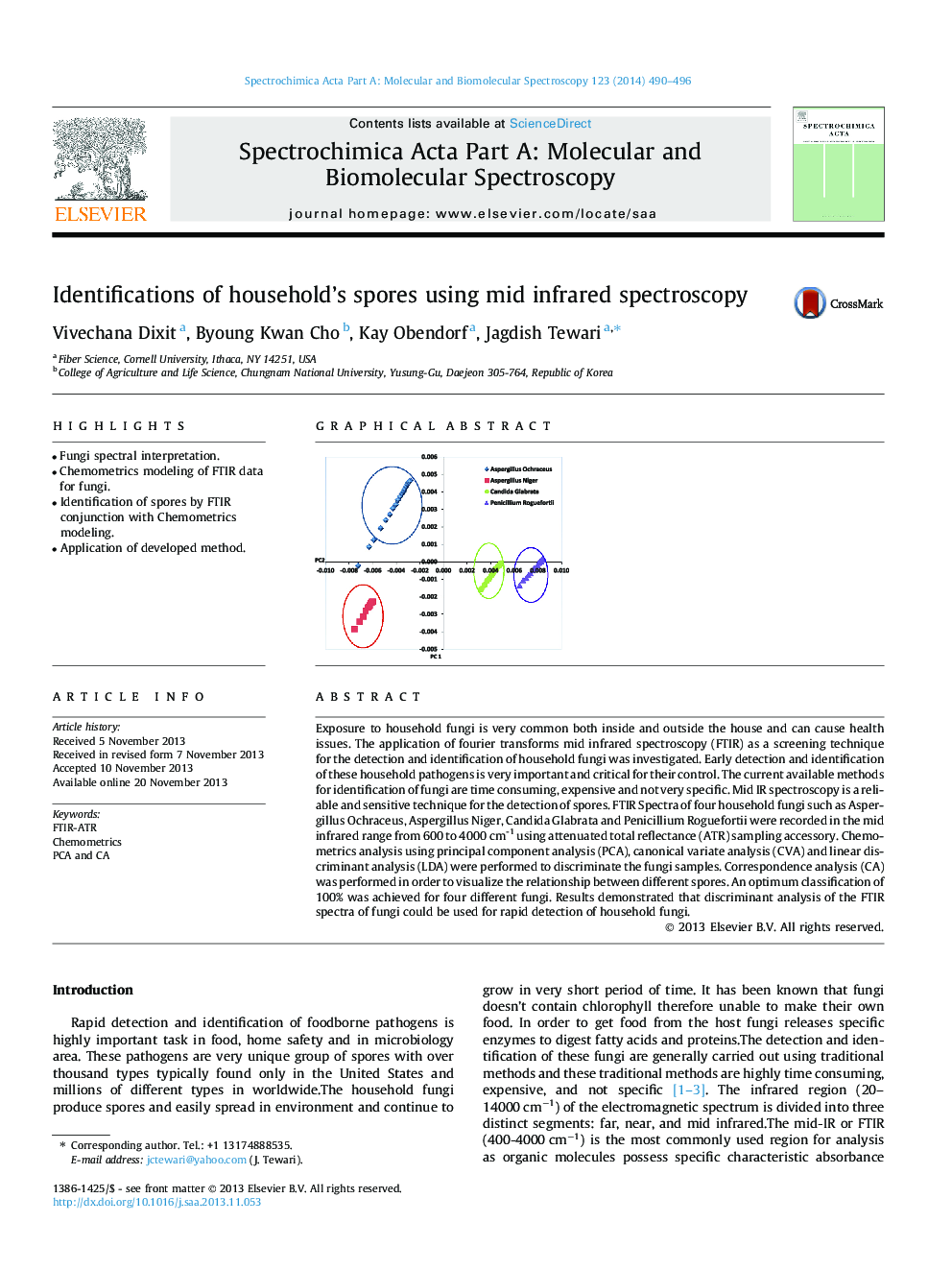| Article ID | Journal | Published Year | Pages | File Type |
|---|---|---|---|---|
| 1232872 | Spectrochimica Acta Part A: Molecular and Biomolecular Spectroscopy | 2014 | 7 Pages |
•Fungi spectral interpretation.•Chemometrics modeling of FTIR data for fungi.•Identification of spores by FTIR conjunction with Chemometrics modeling.•Application of developed method.
Exposure to household fungi is very common both inside and outside the house and can cause health issues. The application of fourier transforms mid infrared spectroscopy (FTIR) as a screening technique for the detection and identification of household fungi was investigated. Early detection and identification of these household pathogens is very important and critical for their control. The current available methods for identification of fungi are time consuming, expensive and not very specific. Mid IR spectroscopy is a reliable and sensitive technique for the detection of spores. FTIR Spectra of four household fungi such as Aspergillus Ochraceus, Aspergillus Niger, Candida Glabrata and Penicillium Roguefortii were recorded in the mid infrared range from 600 to 4000 cm-1 using attenuated total reflectance (ATR) sampling accessory. Chemometrics analysis using principal component analysis (PCA), canonical variate analysis (CVA) and linear discriminant analysis (LDA) were performed to discriminate the fungi samples. Correspondence analysis (CA) was performed in order to visualize the relationship between different spores. An optimum classification of 100% was achieved for four different fungi. Results demonstrated that discriminant analysis of the FTIR spectra of fungi could be used for rapid detection of household fungi.
Graphical abstractFigure optionsDownload full-size imageDownload as PowerPoint slide
